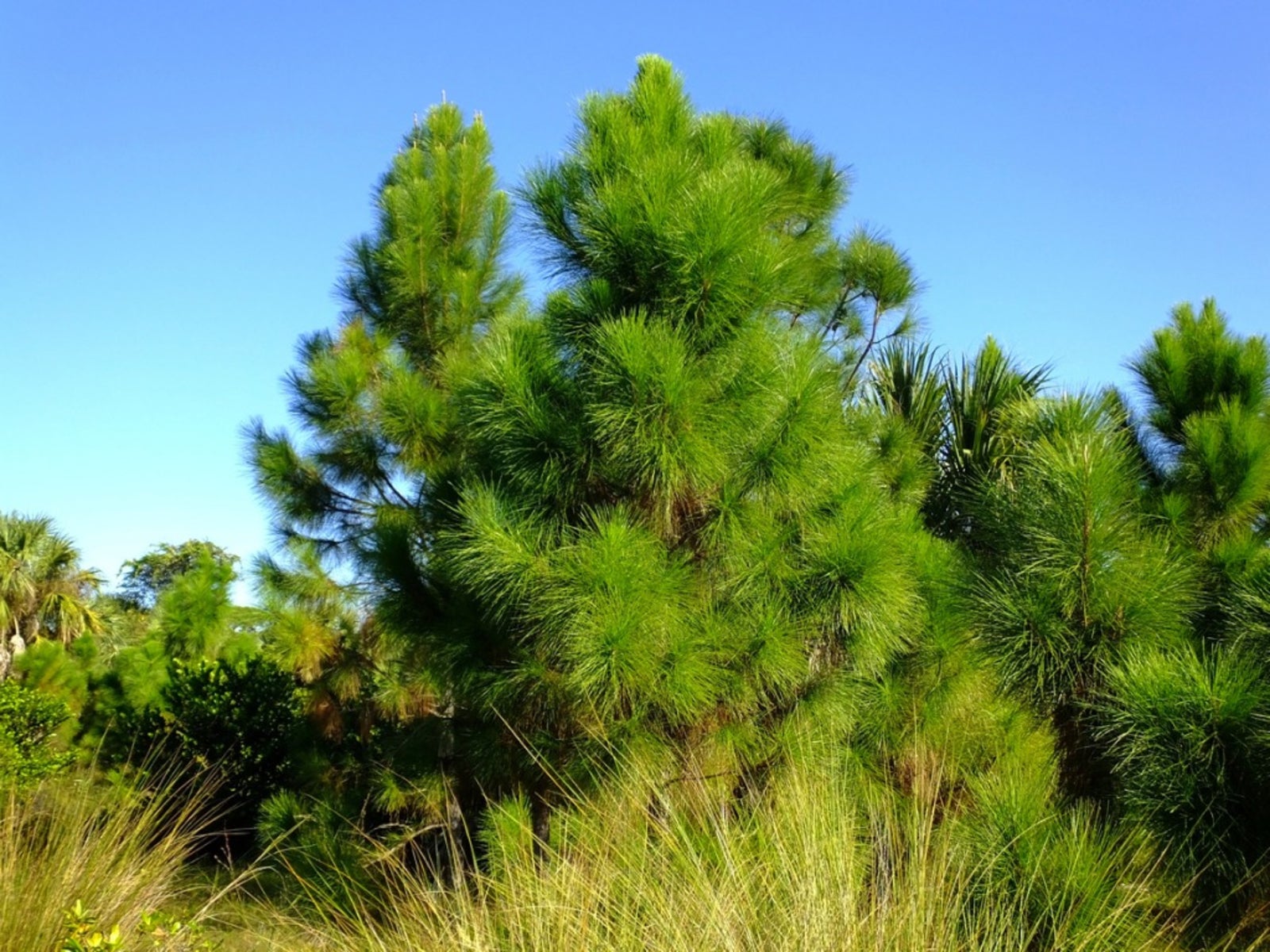Slash Pine Tree Facts: Tips On Planting Slash Pine Trees


What is a slash pine tree? This attractive evergreen tree, a type of yellow pine native to the southeastern United States, produces sturdy, strong wood, which makes it valuable for the area’s timber plantations and reforestation projects. Slash pine (Pinus elliottii) is known by a number of alternative names, including swamp pine, Cuban pine, yellow slash pine, southern pine, and pitch pine. Read on for more slash pine tree information.
Slash Pine Tree Facts
Slash pine tree is suitable for growing in USDA plant hardiness zones 8 through 10. It grows at a relatively fast rate, attaining about 14 to 24 inches (35.5 to 61 cm.) of growth per year. This is a good-sized tree that reaches heights of 75 to 100 feet (23 to 30.5 m.) at maturity. Slash pine is an attractive tree with a pyramidal, somewhat oval shape. The shiny, deep green needles, which are arranged in bunches that look a little like brooms, can reach lengths of up to 11 inches (28 cm.). The seeds, hidden in glossy brown cones, provide sustenance for a variety of wildlife, including wild turkeys and squirrels.
Planting Slash Pine Trees
Slash pine trees are generally planted in spring when seedlings are easily found at greenhouses and nurseries. Growing a slash pine tree isn’t difficult, as the tree tolerates a variety of soils, including loam, acidic soil, sandy soil, and clay-based soil. This tree tolerates wet conditions better than most pines, but it also withstands a certain amount of drought. However, it doesn’t do well in soil with a high pH level. Slash pine trees need at least four hours of direct sunlight per day. Fertilize newly planted trees using a slow-release, general-purpose fertilizer that won’t burn the sensitive roots. A regular balanced fertilizer with an NPK ratio of 10-10-10 is fine once the tree is a couple of years old. Slash pine trees also benefit from a layer of mulch around the base, which keeps weeds in check and helps keep the soil evenly moist. Mulch should be replaced as it deteriorates or blows away.
Sign up for the Gardening Know How newsletter today and receive a free copy of our e-book "How to Grow Delicious Tomatoes".

A Credentialed Garden Writer, Mary H. Dyer was with Gardening Know How in the very beginning, publishing articles as early as 2007.